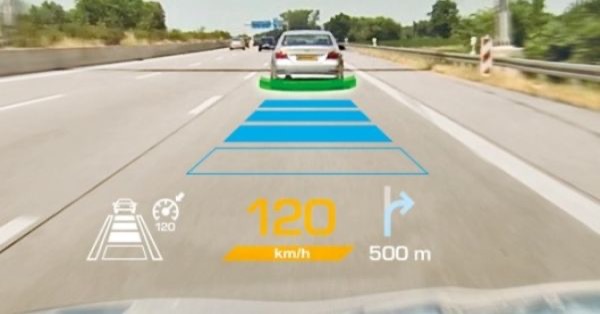
By Anu Halme, Head of Professional Services and Basemark’s Security Officer | May 20, 2021
 Many inventions are created at least twice and their time on the hype cycle from Innovation Trigger to Gartner’s famous Plateau of Productivity can endure much longer than expected. The earliest Augmented Reality application I came across was at the German CeBit fair in 2004. The application was presented on the Siemens SX1 phone and whereby playful mosquitos were hovering over an additional layer on top of the phone camera.
Many inventions are created at least twice and their time on the hype cycle from Innovation Trigger to Gartner’s famous Plateau of Productivity can endure much longer than expected. The earliest Augmented Reality application I came across was at the German CeBit fair in 2004. The application was presented on the Siemens SX1 phone and whereby playful mosquitos were hovering over an additional layer on top of the phone camera.
The AR game was called Mozzies and it was a tad boring, I was perplexed as to why on earth someone would use their smartphone like that. Come to think of it, we probably used the term “camera phone” in those days.
Over the years, numerous companies strived to find meaningful use cases in the gaming and advertising field but most of them failed as there was no real value for the users or consumers.
However, there is one area where AR adds real value and that is in the Automotive sector because AR increases safety.
Currently, the automotive industry is using Augmented Reality in several areas, in design, assembly, manufacturing, training, and maintenance. Having said that, the customer value can be created only where customers are around, and that is inside of the very car.
AR is a form of human-machine interaction (HMI) in which virtual components are inserted and superimposed on the real world, creating the illusion of an ‘enriched’ reality. Forget the mosquitos and pocket monsters, this is the real thing but it needed to be re-invented several times.
If we take a closer look, AR, especially the head-up displays, one will note that HUDs are a very powerful Augmented Reality technology that improves safety by keeping the driver’s attention on the road instead of switching between phone, navigation screen, and various gauges.
Such displays can either add information such as navigation, speed information, or the distance to the next car, or they can highlight elements that are already present in the environment, such as a bicycle that is too close. In the coming years, such HUDs will likely be replaced by augmented reality displays in windows and mirrors but the same logic will endure.
It isn’t our eyes only; the human ear is always active. Beeping and other sounds belong to the Augmented Reality, too, and can improve security through well-timed sounds when there is another vehicle in the blind spot or when driving too fast.
AR has reached the Plateau of Productivity which means that it has reached the mainstream and it has now become relevant for the users and the market. This phase also indicates that it will continue to grow. Furthermore, one may ask, how about Autonomous driving, computers don’t need additional visual layers, right?
Autonomous driving is on its way, undoubtedly, but as long as a human presence is still needed in the car, Augmented Reality will assist us to keep our attention on traffic and keep us safe.
